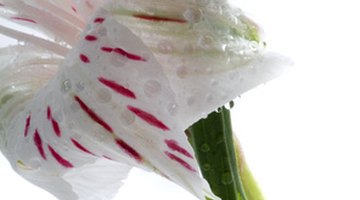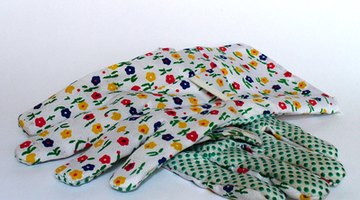Alstroemeria Toxicity
Table of Contents
The beautiful alstroemeria, also known as Peruvian lily or lily of the Incas, is native to the Andes. This tuberous perennial bears orange or yellow blooms, with hybrid varieties available in a wider range of colors. In the United States, the flower is hardy to Zone 7, but it requires winter protection.

This plant's lovely appearance, however, belies its toxicity: All species of alstroemeria—especially cut or damaged parts—must be handled with care.
Cause

Every part of the alstroemeria can be toxic. The cause of this toxicity is the compound tulipalin, which is produced when plant tissues are damaged—for example by a cut. The sap of the alstroemeria plant contains the compound Tuliposide A, whose enzymes produce the allergen, according to the Botanical Dermatology Database.
Effects

Tulipalin is a contact allergen, which means it causes a reaction on touch, as well as an ingested allergen, causing a reaction if swallowed. The California Poison Action Line lists alstroemeria in both Category 2 and Category 4. Category 2 toxins have "mild toxicity," meaning that if ingested these substances, including alstroemeria, can "cause minor illnesses such as vomiting or diarrhea." Category 4 toxins cause dermatologic—skin—reactions, such as "a skin rash or irritation." Further effects can include blisters, skin fissures or eye irritation.
Avoidance

Because any part of the alstroemeria plant can cause a reaction, gardeners may experience a reaction from such everyday handling as transplanting bulbs or cutting flowers. To be safe, wear plastic gloves when working with alstroemeria; ordinary cloth gardening gloves may allow the irritant, tulipalin, to reach your skin. Remove gloves as soon as you are finished, and wash your hands in warm, soapy water; be careful not to touch your face, especially your eyes or mouth, until you have done so.
Response

If anyone ingests any part of the alstroemeria, call your local poison control hotline or your physician immediately. In cases of skin contact, wash the affected skin immediately and call poison control or your physician for a recommendation of a specific response based on the symptoms.
Considerations: Pets

While humans may take precautions to avoid contact with the toxins in alstroemerias, pets are at particular risk for accidental ingestion. The California Poison Action Line advises that most plants toxic for humans are also toxic for animals.
The Drip Cap
- The beautiful alstroemeria, also known as Peruvian lily or lily of the Incas, is native to the Andes.
- The cause of this toxicity is the compound tulipalin, which is produced when plant tissues are damaged—for example by a cut.
- Further effects can include blisters, skin fissures or eye irritation.
- To be safe, wear plastic gloves when working with alstroemeria; ordinary cloth gardening gloves may allow the irritant, tulipalin, to reach your skin.
References
Resources
Writer Bio
Jennifer Spirko has been writing professionally for more than 20 years, starting at "The Knoxville Journal." She has written for "MetroPulse," "Maryville-Alcoa Daily Times" and "Some" monthly. She has taught writing at North Carolina State University and the University of Tennessee. Spirko holds a Master of Arts from the Shakespeare Institute, Stratford-on-Avon, England.
Photo Credits
- alstroemeria image by Kolett from Fotolia.com
- alstroemeria image by Kolett from Fotolia.com
- chimie poison image by Danielle Bonardelle from Fotolia.com
- alstroemeria isolated flower image by mashe from Fotolia.com
- gardening gloves image by egirldesign from Fotolia.com
- Mysterious Alstroemeria image by LOA from Fotolia.com
- flower cat image by Wendi Evans from Fotolia.com
More Articles



